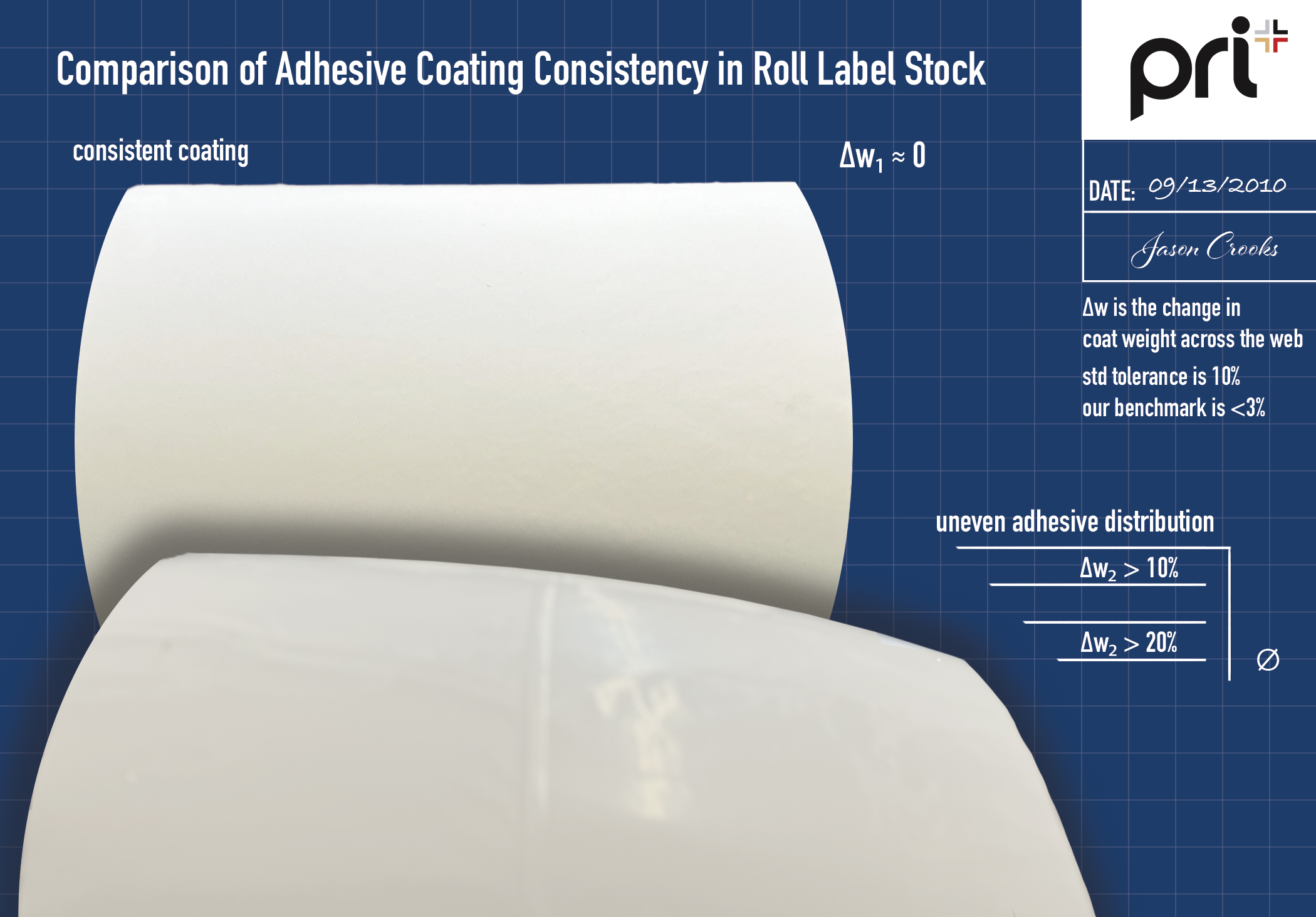A Small Issue with Big Consequences
In the fast-paced world of label converting, even small inconsistencies in materials can lead to major headaches down the line. One common issue that can derail production and affect product quality is an inconsistent thickness gauge band of adhesive across the web. Though it might seem like a minor variation, this inconsistency can create a ripple effect of problems, from die-cutting difficulties to performance failures in the field.

What Causes Inconsistent Adhesive Thickness?
Several factors can lead to uneven adhesive distribution across the web:
Coating equipment that isn’t properly calibrated or aligned can apply adhesive unevenly.
• Changes in Adhesive Viscosity:
Fluctuations in temperature or formulation can lead to variations in how much adhesive is applied.
• Equipment Malfunctions:
Worn components can disrupt the adhesive distribution process.
• Variable Web Tension:
Uneven tension can cause adhesive to pool or thin in different areas.
The Issue of Inconsistent Adhesive After Slitting
While inconsistencies are often easier to detect on master rolls, they become less apparent once the roll is slit into narrower widths. This reduction in visibility can mask significant variations in adhesive thickness that may lead to different adhesion properties across the slit rolls.
How Inconsistent Adhesive Thickness Impacts Production
The impact of inconsistent adhesive thickness can be felt throughout the production process:
Thicker adhesive sections can lead to improper die cuts, resulting in material waste and downtime.
• Peel Strength and Tack Variability:
Inconsistent adhesive distribution can cause labels to fail during application, leading to customer dissatisfaction.
• Print Registration Issues:
An uneven adhesive layer can affect alignment and cause print distortions.
• Material Waste:
Rejected labels and rework can result in significant material waste.
Solutions for Label Converters: Ensuring Consistency Across Slit Rolls
Conduct adhesive quality checks on each slit roll to catch inconsistencies early and prevent wasted materials.
• Use In-Line Inspection Systems:
Invest in in-line measurement systems to detect variations in adhesive thickness during slitting.
• Work with High-Quality Adhesive Suppliers:
Partner with suppliers that have stringent quality control measures to minimize inconsistencies.
• Establish Communication with Label Stock Manufacturers:
Maintain open lines of communication to address recurring adhesive inconsistencies proactively.
• Adjust Process Based on Application:
Tailor processes to match end-use applications, potentially opting for narrower slit rolls or pre-qualified materials.
• Test in Real-World Conditions:
Validate adhesive performance under real-world conditions to ensure consistency, even when variations exist.
PRI Plus understands the importance of consistent adhesive thickness and its impact on production efficiency.
By selecting only the highest quality components and utilizing expert coating techniques, we ensure that our coaters maintain remarkable uniformity across every master roll. Our commitment to delivering heavy coat weights offers superior sticking performance that truly distinguishes us in the market. With an industry-leading 2-3% coat weight accuracy, we exceed the standard tolerance of 10% by meticulously controlling temperature, pressure, and other variables to achieve consistent thickness across the web. This dedication to precision means you receive flawlessly finished rolls ready for your label converting needs.